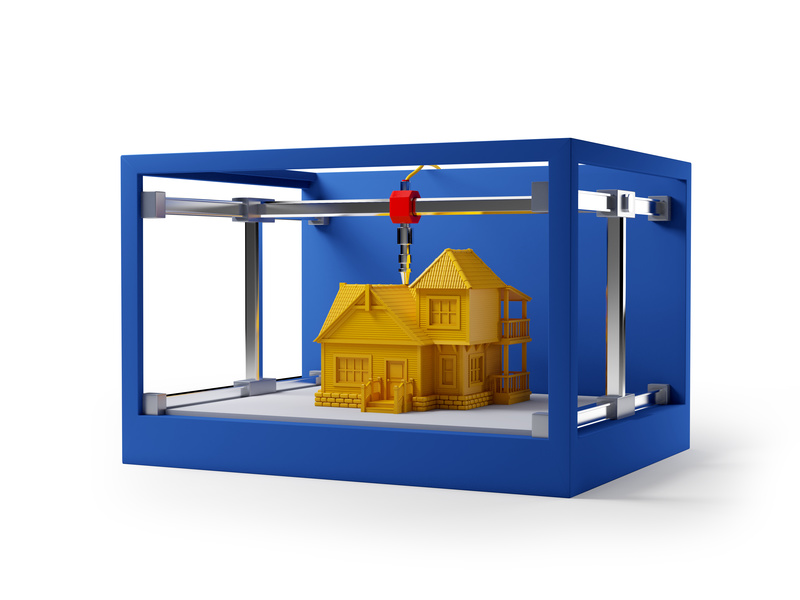3D Print Britain’s Homes
Ten years ago, the Barker Review of Housing Supply suggested that Britain would need to build around 250,000 new homes every year to control spiralling house prices and put an end to the crippling shortage of affordable homes. The truth is we’ve built nowhere near enough to meet this demand, the impact of which is being felt more than ever in 2016. So can we 3D Print Britain’s Homes?
By 2025, current figures suggest that Britain’s housing shortfall could hit 1 million. The impact of this is likely to prove detrimental given that the country’s population is increasing by 136k people a year — but what can be done about it?
Last year, The Guardian published an article looking at how 3D printing, coupled with changes to land reform, could put an end to Britain’s burgeoning housing crisis. The piece suggests that traditional construction and property development processes will not be enough to solve the housing crisis and that building homes using a 3D printer could offer an alternate solution.
3D printing houses might sound more like a pipedream than reality, but in fact, the technology is already being used to great effect within the construction industry. By simplifying the planning, design and construction process of building new houses, and giving everyone the option to build their own high-performance, low-cost home, 3D printers are being hailed as the future of Britain’s housing market.
But just how much would it cost to build an average British home using an average 3D printer? Well, it all depends on the square footage of the house, and the way it’s all put together. The simplest way to calculate the cost of 3D printing a house is to take its square area and a number of levels and multiply it by the cost of running a 3D printer (including material costs). Thankfully (because we aren’t so keen on maths here at TonerGiant HQ), there’s a calculator that actually sums up how much it would cost to 3D print a house, and we used it to work out just what it would cost to build the average British home.
Based on a number of different sources, we found that the average three-bedroom, two-storey, semi-detached house in Britain is around 900 square feet. So, using the 3D Print Your House calculator, it would cost £112,239 (and 12p) to 3D print the average British semi — albeit a plastic one lacking windows and doors.
Depending on where you want to build your new house, we don’t think that’s too bad for a complete house — material and building costs and all. The average price for a 3 bedroom semi detached house in many parts of the UK is around £250k-£300k, so you could stand to make a considerable saving by building your home using a 3D printer, especially if you’re just after a one bedroom flat or two-up-two-down terrace.
However, given that the cost calculator is based on the print speed of the Replicator 2 3D printer, your new home isn’t likely to be a quick build. In fact, based on an average 900 square foot house, it would take 104 years, 5 months and 19 days to finish the job — so make sure your great grandchildren are included in your will.
Joking aside, with the right 3D printer and the correct processes in place, we think the low cost and flexibility offered by 3D printers could see it become a major means of construction in the next half a century — and many experts agree.
Indeed, in September 2015, Italian engineering firm, WASP, unveiled the world’s biggest 3D printer, which was designed specifically to build homes in a bid to solve the world’s global housing crisis. At 40 feet tall and 20 feet wide, this massive printer can build structures using a clay-like substance in a matter of months, and does so via a suspended nozzle that builds layers to form the basic shell of a house.
This isn’t the first time 3D printers have been used to build houses, either. In 2014, a Chinese construction company built a street full of houses using a 3D printer. According to the firm the houses can be built for around £2,970, and because the process is so simple, 10 complete houses can be printed in a single day — which is pretty impressive.
That means if Britain were to adopt similar 3D printing technology, it could effectively put an end to the housing crisis in a matter of years. New homes would not only be more readily available, but they’d be cheap and affordable — that is, if land prices weren’t so high in the first place.
By pairing fast and efficient technologies with proper land reform (in which the average Joe could afford to buy his or her own plot of land on which to build their own home), it’s wholly possible that 3D printing could help to solve Britain’s housing crisis. But what do you think? Would you be happy to live in a 3D printed home, or are you keen to stick good old bricks and mortar? Let us know on Facebook or Twitter.
Or, if you’re just here for cheap toner and ink, visit our homepage where you can browse our complete range of affordable print consumables, or call our friendly team on 0845 365 3605.

